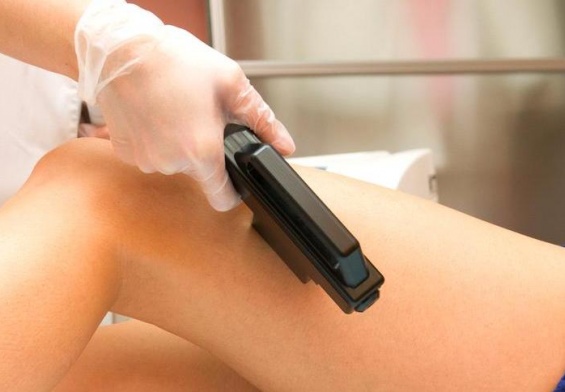A relatively common condition, varicose veins are large, swollen cords that run just below the surface of your skin. They usually appear somewhere on your legs and feet, and they affect approximately 23% of people in the United States. While any superficial vein can become enlarged, it usually happens to leg veins because of the pressure they receive from constant standing and walking. For most people, varicose and spider veins are only a cosmetic issue, but they can cause pain and more serious problems in some cases.
Common Signs of Varicose Veins
Typically, varicose veins appear dark purple or bluish in color. Often, they stick out in a twisted pattern on the outside of the legs. While they usually do not cause much pain, they can create a burning sensation or muscles cramps in your legs.
Many people with varicose veins experience aches and pains after sitting or standing for a long time. Other common signs are the itching and skin discoloration that may occur at the sight of varicose veins.
Often lumped in with varicose veins, spider veins are similar but smaller. They usually appear closer to the skin’s surface and are characterized by their red or bluish color.
Who Is most at Risk for Developing Varicose Veins?
Medical experts are not certain of the causes, but they do cite a number of factors that put people at high risk for varicose veins.
- Sex: Unfortunately, women are twice as likely as men to develop these unappealing bulges in their legs. Episodes such as pregnancy, premenstruation, and menopause can be contributing factors because of the hormonal changes in their bodies. Not only do female hormones relax vein walls, but common hormone treatments such as birth control pills can also elevate the risk of varicose veins.
- Age: As we age, the risk of varicose veins goes up because of the added wear and tear on the valves in your veins that control blood flow. Over time, these valves can leak some of that blood flow back to your veins where it collects instead of returning to the heart.
- Weight gain: Carrying extra weight puts extra pressure on your veins, causing them to expand.
- Genetics: If other family members have varicose veins, there is an increased likelihood that you will too.
Common Treatment Methods
Fortunately, people who suffer from leg pain or who simply cannot stand how they look have a few treatment options to rid themselves of varicose veins.
- Phlebectomy: The traditional method of stripping out a leg vein is seldom used these days. Alternatively, a less invasive process known as “ambulatory phlebectomy” or “micro-phlebectomy” is used for physical leg vein removal. Its benefits include minimal scarring and almost no downtime after surgery.
- Laser Treatment: Laser varicose vein treatment involves threading a laser fiber into the diseased vein and activating it along the length of the vein. The idea here is to vaporize the vein in order to stop the blood flow and extra pressure that causes varicose veins. This procedure has gained in popularity because it only requires a local anesthetic and any resulting inflammation or discomfort usually disappears within 3-4 days.
- Radiofrequency: Instead of using a laser, this procedure works by using a radiofrequency generator to heat the affected vein. Thermal energy collapses the vein and seals it shut, diverting any blood flow to healthy veins. This method is often used for closure of abnormal perforating veins. Like laser treatment, it is minimally invasive and causes very little scarring.
Although there’s no foolproof way to avoid varicose veins, there are some things you can do to lower your chances. Improving your circulation and your muscle tone can make a positive difference. In addition, regular exercise and keeping your weight down can lessen the risk and the severity of varicose veins. Occasionally elevating your legs and frequently changing your sitting or standing position can also reduce the stress on your veins.
And if all else fails, there are a number of effective, minimally invasive vein treatments that can remove those unsightly veins without causing much pain or disruption to your schedule.
*source: https://www.mayoclinic.org/diseases-conditions/varicose-veins/symptoms-causes/syc-20350643




